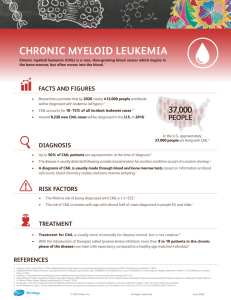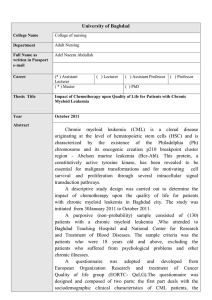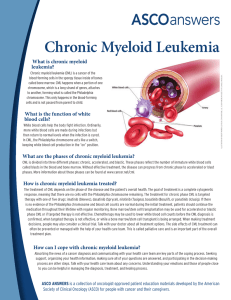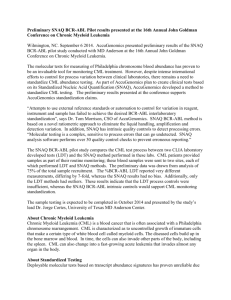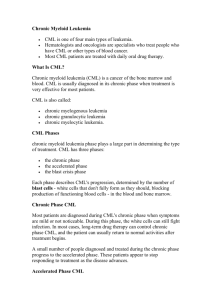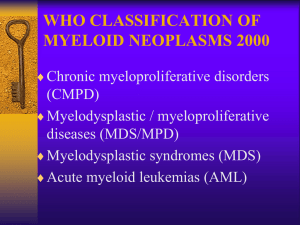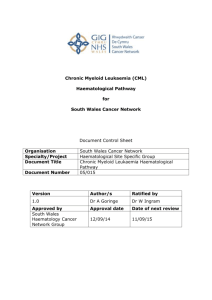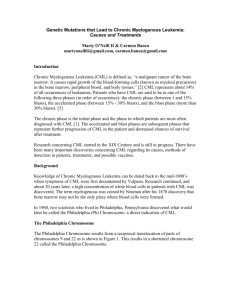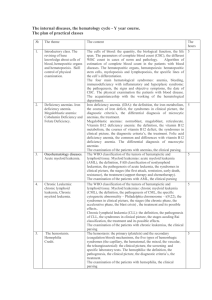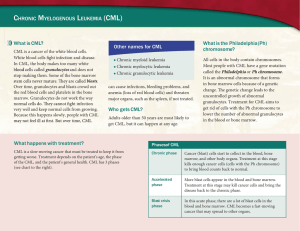India`s Supreme Court has rejected a bid from Swiss pharmaceutical
advertisement
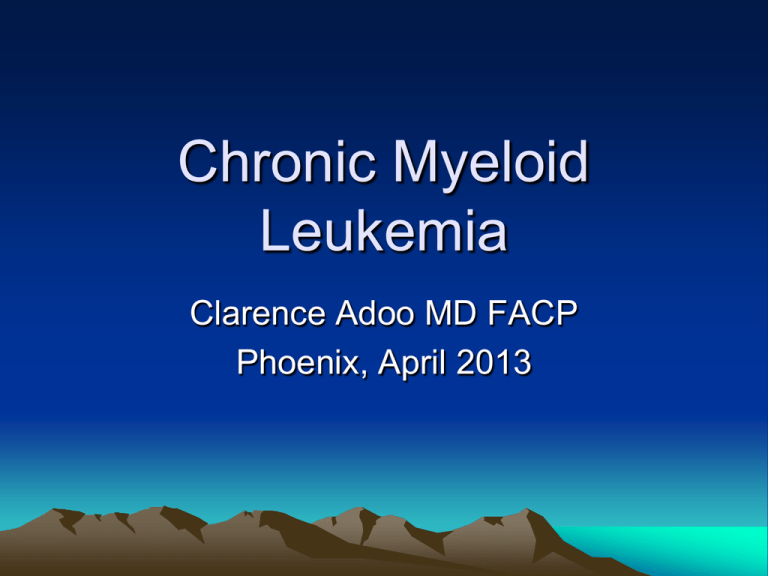
Chronic Myeloid Leukemia Clarence Adoo MD FACP Phoenix, April 2013 CML One day in the life of Mr. James B. Smith, who has been diagnosed with CML JB: fatigue, intolerance of large meals, weight loss, low grade fevers, cough. Presentation • • • • • • Fever, pallor, few scattered bruises Splenomegaly No lymphadenopathy WBC 247,000 /ul (normal is 12 /ul) Mild thrombocytopenia and anemia Normal chemistry, coags. Buffy coat. Peripheral Film Acute Myeloid Acute Lymphoblastic Chronic Myeloid Chronic lymphocytic Molecular genetic lesions in leukemia • Increased rate of growth • Decreased rate of cell death • Impaired maturation AML maturation growth ALL growth maturation CML growth CLL cell death Nowell and Hungerford The Ph Chromosome Etiology: ionizing radiation, DNA toxins non hereditary. Male: female 1.4 : 1 1-2 per 100K in US Detection: cytogenetics FISH RT PCR Pathology • Peripheral blood “like marrow” • Mature neutrophils predominate • Bone marrow: – elevated Myeloid:erythroid ratio – Blast percentage – Trilineage dysplasia – Increased reticulin Tyrosine kinases • Highly conserved in nature • Ubiquitous (90 in human genome) • Almost one half are receptor proteins Ligand Tyrosine kinase inhibitors • Imatinib, dasatinib, nilotinib, posatinib • Sunitinib, vorafenib, erlotinib, ibrutinib, lapatinib, gefitinib, lafatinib, sorafenib… Lung cancer, breast cancer, colon cancer, pancreatic cancer, kidney cancer, melanoma, sarcoma, liver cancer. Tyrosine kinase inhibitors India’s Supreme Court has rejected a bid from Swiss pharmaceutical company Novartis AG to patent an updated version of its cancer drug Gleevec. JBS: his outlook. Natural history of CML: Chronic Phase Accelerated phase Blast crisis Median survival 1-2 years Rx pre 1990 • Hydroxyurea or busulfan – control counts • Interferon alfa: – Maintenance, delay transformation • Younger, w suitable donor: – Allogeneic stem cell transplant – Remains the only curative therapy JBS’ future outlook • 95% likely to get hematologic response • Cytogenetic response – Minor, major or complete (percentage Ph’) • Maintenance therapy • Monitoring of minimal residual disease • Risk of TKI resistance
